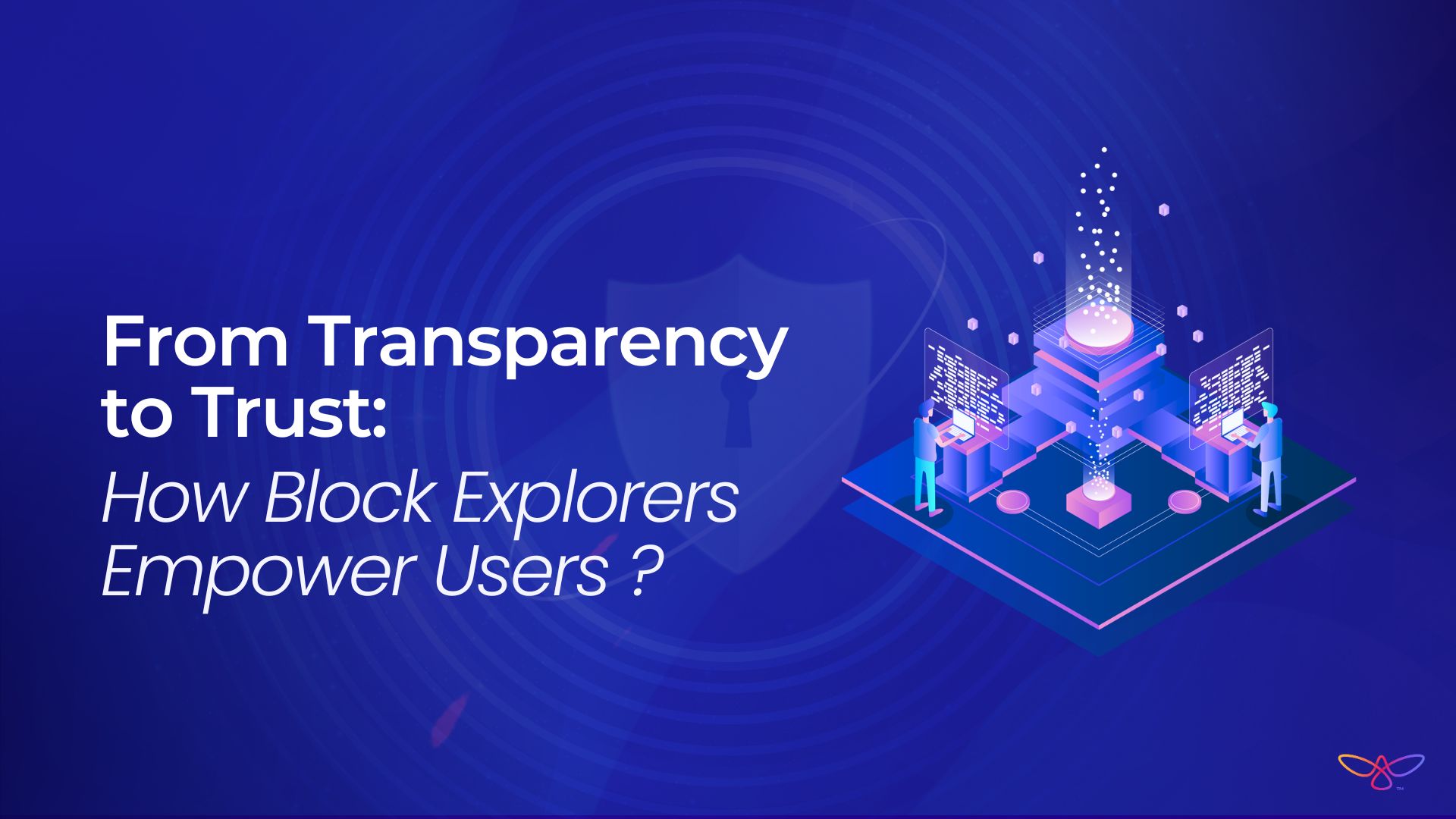From Transparency to Trust: How Block Explorers Empower Users


Blockchains store vast amounts of data across complex networks of nodes, all in binary form that is not inherently readable or understandable by everyday users. To decode this digital DNA and discover the wealth of information it holds, there is no tool more essential than a block explorer. While there might be some other analytics tools that offer complementary insights, they fall short without the foundational understanding a block explorer provides. Hence, for anyone looking to operate within the blockchain space, knowing the importance of block explorers is not just useful—it’s indispensable.
In this article, we will delve into what block explorers are, how they work, what on-chain data truly means, and why every business that plans to operate on-chain should have a block explorer.
A block explorer is essentially a search engine for blockchains, initially introduced in public chains where transparency and unrestricted access are paramount. It allows users to look up detailed information on transactions, explore wallet addresses, and examine the blocks themselves, ensuring that anyone can verify the activities on the blockchain without needing permission.
For individual users or businesses observing public chains, the practicality of a block explorer lies in its ability to deliver real-time data. You can see the amount transferred, the wallets involved in transactions, and the exact timestamp of each transaction, all of which are crucial for tracking and verifying movements within the blockchain. Information about blocks—their mining time, position in the blockchain sequence, and the transactions they contain—helps users ensure the integrity of the network and follow its growth accurately. This demonstrates one of the critical benefits of block explorers: real-time data access and verification.
Beyond transaction and block details, blockchain explorers also offer a comprehensive suite of network-level information. This includes the current hash rate, reflecting the computing power dedicated to mining new blocks and securing the network, and the size of the mempool, indicating the volume of pending transactions awaiting confirmation. Such comprehensive information underscores the importance of block explorers in the context of network health and activity.
The dashboard of a block explorer, such as Etherscan, presents this information systematically, displaying everything from the latest blocks and their details to overarching network statistics like the current mining difficulty and transaction volumes. This level of detail is invaluable for users who rely on up-to-the-minute data to make informed decisions, like checking how many confirmations are pending before a transferred token shows up in your balance.
Blockchain explorers also play a crucial role in verifying the integrity of smart contract codes on public chains. By transforming indecipherable byte code into a human-readable format, these tools allow counterparties to thoroughly review and validate the underlying logic before engaging in any transactions or queries. With intuitive ledger APIs, users can also tailor their data views, focusing on the granular details that matter to them. This customization can reveal patterns and insights to businesses that might otherwise remain hidden within the expanse of blockchain data.
Now, before we delve into the importance of block explorers further, let’s explore their architecture, which is vital for their function.
Block explorers function as an encyclopedia that catalogs every transaction and block detail, which is especially critical in public chains where data must be transparent and readily accessible. These explorers connect to full/archive nodes within the blockchain network, allowing them to download and store a complete copy of the blockchain’s data. This comprehensive repository enables efficient and precise searches for specific transactions, blocks, or wallet activities.

The block explorer’s backend systems continuously monitor the blockchain, listening for new blocks and transactions. As these updates occur, the explorer’s indexing engine springs into action, parsing the incoming data and storing it in a high-performance database. This setup ensures that the front-end applications can quickly retrieve and display the information requested by users, providing a smooth and responsive experience that is critical for public chain interactions.
So, if we break it down, their architecture consists mainly of three components:
Through this structure, the benefits of block explorers in streamlining search operations become evident.
The process starts when a user queries a wallet address, for example. The request is processed through the API, which pulls relevant transaction details from the public chain nodes. This data is then indexed in the SQL database, allowing users to view comprehensive transaction histories and wallet balances almost instantly on the front end. This quick and user-friendly data retrieval process highlights the importance of block explorers for the end-user experience.
The relational database’s ability to connect different tables (e.g., transactions linked to specific blocks or addresses) simplifies data management and enhances the query capabilities of the block explorer. This setup not only supports the retrieval of specific data like transaction volumes or the activity status of a wallet but also powers more complex functions such as smart contract verification. This feature decodes the bytecode of smart contracts into readable text, ensuring transparency and security before transactions are executed.
Maintaining the real-time nature of block explorer data is a hard job, though, as blockchain networks can generate vast amounts of information at a breakneck pace. To address this challenge, block explorer developers implement a range of optimization techniques, including caching mechanisms, parallel processing, and event-driven architectures. All these help to reduce latency and ensure that users have the most up-to-date and accurate blockchain data available.
The importance of block explorers extends into the realm of custom blockchains as well, like appchains and rollups. While the basic skeleton of block explorers remains mostly the same whether operating on public or custom L1/L2/L3 chains, custom explorers often incorporate additional features such as better dashboards and enhanced analytical tools tailored to the specific needs of the custom chain environment.
These enhancements can include more detailed network metrics, customized data views for specific types of transactions, and advanced user interfaces designed to accommodate the unique aspects of the custom chains they serve. This adaptability ensures that whether a user is interacting with a public blockchain or a specialized custom chain, the block explorer provides a reliable, insightful, and comprehensive view of the blockchain’s activities.
Reflecting on both public and custom chains, we see the overarching importance of block explorers across different blockchain architectures.
Now is the time for appchains and rollups. Every dApp has its own chains. It could be standalone L1 blockchains built using Cosmos SDK, substrate chains, Avalanche Subnets, or any L2/L3 EVM rollup chains. It could be a Hyperledger Besu chain as well if anyone wants a public-permissioned network. Examining the importance of block explorers for appchains and rollups reveals several advantages.
As we evolve, so too should the tools we use to understand on-chain interactions. Custom block explorers are becoming indispensable for anyone serious about leveraging the advanced capabilities of appchains and rollups. Whether opting for self-hosted solutions, which offer complete control and customization at the cost of building from scratch or managed services that ensure ease and reliability with necessary customizations, selecting the right block explorer is crucial; these tools not only enhance transparency and trust but also equip users with the insights needed for effective decision-making. As we move forward, the sophistication of block explorers will undoubtedly increase, keeping pace with the complexity and specificity of the blockchain architectures and the precise applications they are designed to illuminate.
